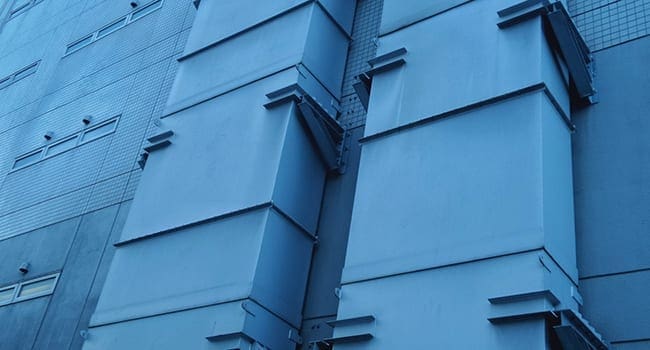“We can tell that something’s up on these cruise ships during the pandemic, and questions are also arising about the safety of airplanes and buildings,” said Brian Fleck, a mechanical engineering professor at the University of Alberta and a co-applicant on a study aimed at determining whether and how viruses use a building’s ventilation system to seek out hosts.
“We’d like it to be something other than the HVAC (heating, ventilation and air conditioning), like the kitchen or a doorknob, but that’s what the study is for.”
The project, led by HVAC systems researcher Lexuan Zhong, was one of seven U of A projects to receive funding through the second round of the federal government’s Rapid Research Funding Opportunity created to aid in the battle against COVID-19. Through two rounds of funding, 11 U of A research projects received $5.8 million in grants.
Fleck said this research program brings together experts in engineering and medical sciences and will begin with a systematic review of the literature on rates of virus in HVAC systems, performed by pediatrics professor Lisa Hartling, director of the Alberta Research Centre for Health Evidence.
Zhong’s lab will test the various filtration techniques in a lab setting, while Fleck will head up an inventory of the university’s various HVAC systems that feed more than one million square metres of lab, classroom and office space on the U of A’s north campus alone.
To make this possible, Fleck said the U of A’s Facilities and Operations portfolio encourages the use of university facilities as a “living laboratory.”
“We’re going to analyze what’s there and create a standard risk analysis on how the different HVAC systems might respond to an epidemic like this,” he said.
And while the U of A’s buildings would all be up to code, Fleck said some systems may be doing a better job of filtering air.
“This isn’t something universities usually have time to do,” he said. “The first end-user of our recommendations will be the university itself.”
As for the testing of the different HVAC filtration techniques, Zhong – an expert in evaluating how HVAC systems recirculate and filter volatile organic compounds such as solvents and glues that could be harmful to people – will use her lab to simulate the flow of viruses.
“We wanted to use her laboratory to find what’s the likelihood that human-generated bioaerosols containing viruses float around the building for a while and end up back in somebody else’s body in some way,” said Fleck.
The end result will include an upgrade of a systematic review that was done in 2007. It gave recommendations on how operators of large numbers of buildings might want to manage their risk. Then practices for air filtration will be updated using the lab work and, finally, the best practices will be put in place to help ensure safety throughout the U of A infrastructure.
In the end, he said current HVAC codes are good but maybe they can be better.
“Finally, we’d really like to give people other than the U of A who have a lot more old and rickety buildings a sort of user’s manual,” said Fleck. “Anytime you stop one transmission, you literally save lives.”
| By Michael Brown for Troy Media
This article was submitted by the University of Alberta’s Folio online magazine. Folio is a Troy Media![]() Editorial Content Provider Partner.
Editorial Content Provider Partner.
The views, opinions and positions expressed by columnists and contributors are the authors’ alone. They do not inherently or expressly reflect the views, opinions and/or positions of our publication.


